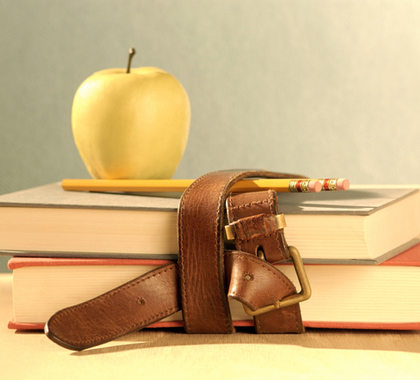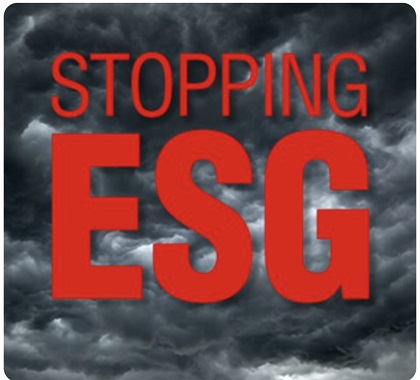Local affiliate Fox 45 News‘s ongoing “Project Baltimore” investigation has uncovered that 41 percent of high school students in Baltimore City Public Schools (BCPS) received a grade point average below 1.0, or below a D average, this past school year. Essentially, roughly 8,400 of Baltimore’s 20,500 high school students have GPA’s considered failing.
The micro-level results in BCPS are just as horrifying as the macro-level results. For example, Fox 45 News also uncovered that over 41 percent of the roughly 400 students at the Augusta Fells Savage Institute of Visual Arts had GPA’s below 0.99 and just 6.8 percent of students had a GPA above 3.0. One senior at the school, who failed 22 of his 25 classes and who’s GPA of 0.13 placed him 62nd in his class of 120, is now being sent back to the ninth grade. (This also means 58 seniors at Augusta Fells Savage somehow had GPA’s below 0.13.)
Considering its $1.4 billion budget and per-pupil spending of around $18,000, these results from BCPS are horrifying and show why Maryland desperately needs to expand education choice options in Baltimore and throughout the state as a whole. The General Assembly did a great thing this year in increasing funding for the BOOST Program, and many Maryland kids are going to be the beneficiaries of that decision, but BOOST’s $10 million budget cap is not big enough to really have an impact for most Maryland students. In 2022, legislators should look to make this successful voucher program universal, open to all Maryland children, and should also work to turn BOOST into an education savings account (ESA) program, so that way families will be able to better individualize education programs to meet the unique needs of their children.
Copious empirical research on school choice programs such as ESAs finds they offer families improved access to high-quality schools that meet their children’s unique needs and circumstances, and that these programs improve academic performance and attainment and deliver a quality education at lower cost than traditional public schools. Additionally, these programs benefit public school students and taxpayers by increasing competition, decreasing segregation, and improving civic values and practices.
Research also shows students at private schools are less likely than their public school peers to experience problems such as alcohol abuse, bullying, drug use, fighting, gang activity, racial tension, theft, vandalism, and weapon-based threats. There is also a strong causal link suggesting private school choice programs improve the mental health of participating students.
It is probably for these reasons, and also because teacher unions have repeatedly played politics with school closings during the COVID-19 pandemic in direct conflict with students’ best interests, that ESAs are more popular with parents than ever before. Polling by EdChoice released in December 2020 found 81 percent support for ESAs, for example, among the general public and 86 percent among current school parents, the highest level of support the program has received in the organization’s eight years of polling on the issue. This represents a 4-percentage point increase over 2019. These findings are mirrored in the American Federation for Children’s seventh-annual National School Choice Poll, released in January 2021, which saw 78 percent support for ESA programs.
The goal of public education in the Maryland today and in the years to come should be to allow all parents to choose which schools their children attend, require every school to compete for every student who walks through its doors, and make sure every child has the opportunity to attend a quality school. There has not been a time when providing these opportunities has been more urgent and more needed than right now. Legislators should recognize that and allow families as many options as possible to get their children the education they need and deserve by expanding and transforming the BOOST Program.
The following documents provide more information about education savings accounts and education choice.
The 123s of School Choice (2021 Edition)
https://www.edchoice.org/wp-content/uploads/2021/04/2021-123s-SlideShare-1.pdf
This report from EdChoice is an in-depth review of the available research on private school choice programs in America. Areas of study include: private school choice program participant test scores, program participant attainment, parent satisfaction, public school students’ test scores, civic values and practices, racial/ethnic integration and fiscal effects.
The Fiscal Effects of Private K–12 Education Choice Programs in the United States
https://www.edchoice.org/wp-content/uploads/2021/03/The-Fiscal-Effects-of-Private-K-12-Education-Choice-Program-in-the-United-States-1.pdf
From an analysis of 40 private educational choice programs in 19 states plus D.C., this EdChoice working paper summarizes the facts and evidence on the fiscal effects of educational choice programs across the United States. The programs in the analysis include three education savings accounts programs (ESAs), 19 school voucher programs, and 18 tax-credit scholarship programs.
A Win-Win Solution: The Empirical Evidence on School Choice (Fourth Edition)
http://www.edchoice.org/wp-content/uploads/2016/05/A-Win-Win-Solution-The-Empirical-Evidence-on-School-Choice.pdf
This paper by EdChoice details how a vast body of research shows educational choice programs improve academic outcomes for students and schools, saves taxpayers money, reduces segregation in schools, and improves students’ civic values. This edition brings together a total of 100 empirical studies examining these essential questions in one comprehensive report.
Child Safety Accounts: Protecting Our Children through Parental Freedom
https://heartland.org/wp-content/uploads/documents/CSAccountsPB.pdf
In this Heartland Policy Brief, Vicki Alger, senior fellow at the Independent Women’s Forum and research fellow at the Independent Institute, and Heartland Policy Analyst Tim Benson detail the prevalence of bullying, harassment, and assault taking place in America’s public schools and the difficulties for parents in having their child moved from a school that is unsafe for them. Alger and Benson propose a Child Safety Account program, which would allow parents to immediately have their child moved to a safe school – private, parochial, or public – as soon as parents feel the public school their child is currently attending is too dangerous to their child’s physical or emotional health.
The Public Benefit of Private Schooling: Test Scores Rise When There Is More of It
https://object.cato.org/sites/cato.org/files/pubs/pdf/pa830.pdf
This Policy Analysis from the Cato Institute examines the effect increased access to private schooling has had on international student test scores in 52 countries. The Cato researchers found that a 1 percentage point increase in the share of private school enrollment would lead to moderate increases in students’ math, reading, and science achievement.
The Effects of School Choice on Mental Health
https://papers.ssrn.com/sol3/papers.cfm?abstract_id=3272550
This study from Corey DeAngelis at the Cato Institute and Angela K. Dills of Western Carolina University empirically examines the relationship between school choice and mental health. It finds that states adopting broad-based voucher programs and charter schools witness declines in adolescent suicides and suggests that private schooling reduces the number of times individuals are seen for mental health issues.
Nothing in this Research & Commentary is intended to influence the passage of legislation, and it does not necessarily represent the views of The Heartland Institute. For further information on this subject, visit School Reform News, The Heartland Institute’s website, and PolicyBot, Heartland’s free online research database.
The Heartland Institute can send an expert to your state to testify or brief your caucus; host an event in your state; or send you further information on a topic. Please don’t hesitate to contact us if we can be of assistance! If you have any questions or comments, contact Heartland’s government relations department, at [email protected] or 312/377-4000.




